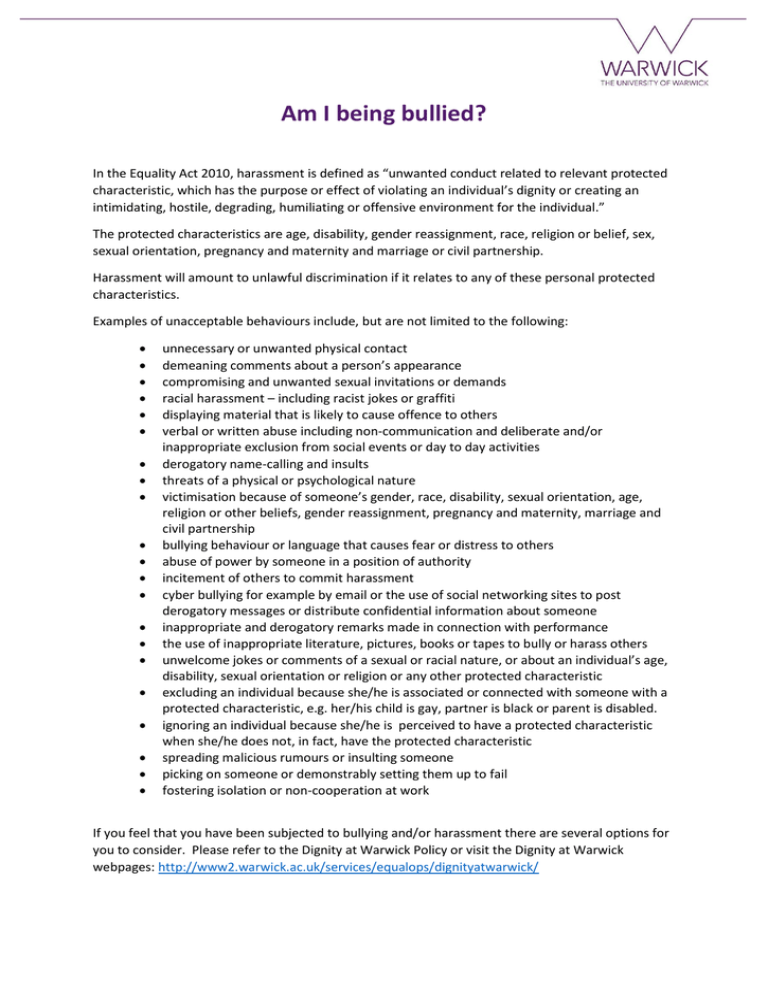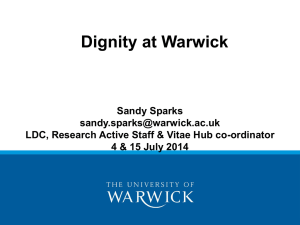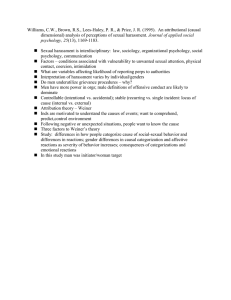Am I being bullied?
advertisement

Am I being bullied? In the Equality Act 2010, harassment is defined as “unwanted conduct related to relevant protected characteristic, which has the purpose or effect of violating an individual’s dignity or creating an intimidating, hostile, degrading, humiliating or offensive environment for the individual.” The protected characteristics are age, disability, gender reassignment, race, religion or belief, sex, sexual orientation, pregnancy and maternity and marriage or civil partnership. Harassment will amount to unlawful discrimination if it relates to any of these personal protected characteristics. Examples of unacceptable behaviours include, but are not limited to the following: unnecessary or unwanted physical contact demeaning comments about a person’s appearance compromising and unwanted sexual invitations or demands racial harassment – including racist jokes or graffiti displaying material that is likely to cause offence to others verbal or written abuse including non-communication and deliberate and/or inappropriate exclusion from social events or day to day activities derogatory name-calling and insults threats of a physical or psychological nature victimisation because of someone’s gender, race, disability, sexual orientation, age, religion or other beliefs, gender reassignment, pregnancy and maternity, marriage and civil partnership bullying behaviour or language that causes fear or distress to others abuse of power by someone in a position of authority incitement of others to commit harassment cyber bullying for example by email or the use of social networking sites to post derogatory messages or distribute confidential information about someone inappropriate and derogatory remarks made in connection with performance the use of inappropriate literature, pictures, books or tapes to bully or harass others unwelcome jokes or comments of a sexual or racial nature, or about an individual’s age, disability, sexual orientation or religion or any other protected characteristic excluding an individual because she/he is associated or connected with someone with a protected characteristic, e.g. her/his child is gay, partner is black or parent is disabled. ignoring an individual because she/he is perceived to have a protected characteristic when she/he does not, in fact, have the protected characteristic spreading malicious rumours or insulting someone picking on someone or demonstrably setting them up to fail fostering isolation or non-cooperation at work If you feel that you have been subjected to bullying and/or harassment there are several options for you to consider. Please refer to the Dignity at Warwick Policy or visit the Dignity at Warwick webpages: http://www2.warwick.ac.uk/services/equalops/dignityatwarwick/



